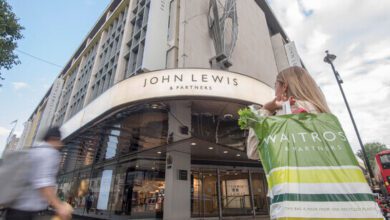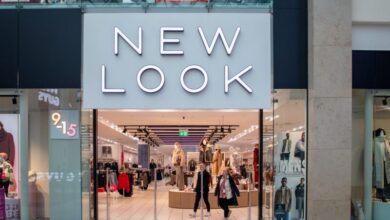ASOS secures new financing deal amid turnaround plans
The online fashion retailer said the improved terms reflect stronger profitability and strategic progress made during the first stages of its multi-year turnaround

Register to get 1 free article
Reveal the article below by registering for our email newsletter.
Want unlimited access? View Plans
Already have an account? Sign in
ASOS has refinanced its asset backed loan facility, securing £87.5m in extra liquidity and extending its debt maturity to 2030.
The company said the move provides “increased financial flexibility” and will cut annual cash interest costs by about £5m compared with its previous arrangement with Bantry Bay.
The online fashion retailer said the improved terms reflect stronger profitability and strategic progress made during the first stages of its multi-year turnaround. It added that the updated structure leaves it better placed to focus on rebuilding customer demand at scale.
ASOS said it is now entering the final phase of its recovery plan, which has centred on creating a more resilient operating base and returning the business to sustainable profit.
Aaron Izzard, ASOS CFO, said: “I’m pleased to announce the further strengthening of our balance sheet and financial flexibility through this strategic refinancing.
“As well as offering improved financial terms, it better positions us to deliver on the final phase of our turnaround strategy and growth plans with greater confidence and resilience.”
It comes as ASOS has been undertaking a three-stage plan involving clearing excess stock and debt, redesigning its commercial model, and “re-engaging” customers.
By early 2025 it had reduced inventory from £1.1bn in 2022 to about £400m and refinanced its balance sheet, including the mothballing of its Atlanta distribution centre, and reducing its inventory position by more than 60% since the end of FY22.
Operational changes included renegotiating supplier and distribution contracts, reducing warehouse capacity, and introducing measures to cut return rates. Test and React – a model designed to quickly bring new products to market – accounted for more than 20% of own-brand sales, while flexible fulfilment represented 10% of third-party sales.
The group also launched new customer initiatives over the summer, including an Adidas collaboration, a UK loyalty scheme called ASOS.World, and expanded distribution of its Topshop and Topman labels. It said early signs of engagement were positive, and that 2025/26 would focus on building “customer love”.
In its latest full-year trading update, ASOS said: “Having concurrently scaled its new commercial model and rebuilt its variable and fixed cost base – stage two of this process – it had planned to shift gears to the final stage earlier in FY25.
“Instead, more opportunities to reduce fixed costs and drive further variable cost optimisation were explored and the business focus remained on securing even stronger profitability foundations that will deliver further material improvements to ASOS’ cost base in FY26 and beyond.”







